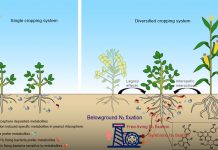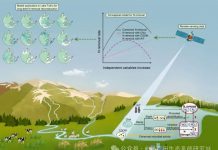Jinbo Zhang Zucong Cai Wenyan Yang Tongbin Zhu Yongjie Yu Xiaoyuan Yan Zhongjun Jia. Long-term field fertilization affects soil nitrogen transformations in a rice-wheat-rotation cropping system. J. Plant Nutr. Soil Sci. 2012 DOI: 10.1002-jpln.201200149.
Abstract
Mineralization and nitrification are the key processes of the global N cycle and are primarily driven by microorganisms. However it remains largely unknown about the consequence of intensified agricultural activity on microbial N transformation in agricultural soils. In this study the 15N-dilution technique was carried out to investigate the gross mineralization and nitrification in soils from a long-term field fertilization experiment starting from 1988. Phospholipid fatty acids (PLFA) analysis was used to determine soil microbial communities e.g. biomasses of anaerobic bacterial bacterial fungi and actinobacteria. The abundance of ammonia-oxidizing bacteria (AOB) and archaea (AOA) were measured using real-time quantitative polymerase chain reaction. The results have demonstrated significant stimulation of gross mineralization in the chemical-fertilizers treatment (NPK) ([6.53 ± 1.29] mg N kg–1 d–1) and chemical fertilizers–plus–straw treatment (NPK+S1) soils ([8.13 ± 1.68] mg N kg–1 d–1) but not in chemical fertilizers–plus–two times straw treatment (NPK+S2) soil when compared to the control-treatment (CK) soil ([3.62 ± 0.86] mg N kg–1 d–1). The increase of anaerobic bacterial biomass is up to 6-fold in the NPK+S2 compared to that in the CK soil ([0.7 ± 0.5] nmol g–1) implying that exceptionally high abundance of anaerobic bacteria may inhibit gross mineralization to some extent. The gross nitrification shows upward trends in the NPK+S1 and NPK+S2 soils. However it is only significantly higher in the NPK soil ([5.56 ± 0.51] mg N kg–1 d–1) compared to that in the CK soil ([3.70 ± 0.47] mg N kg–1 d–1) (p < 0.05). The AOB abundance increased from (0.28 ± 0.07) × 106 copies (g soil)–1 for the CK treatment to (4.79 ± 1.23) × 106 copies (g soil)–1 for the NPK treatment after the 22-year fertilization. In contrast the AOA abundance was not significantly different among all treatment soils. The changes of AOB were well paralleled by gross nitrification activity (gross nitrification rate = 0.263 AOB + 0.047 NH -N + 2.434 R
-N + 2.434 R






